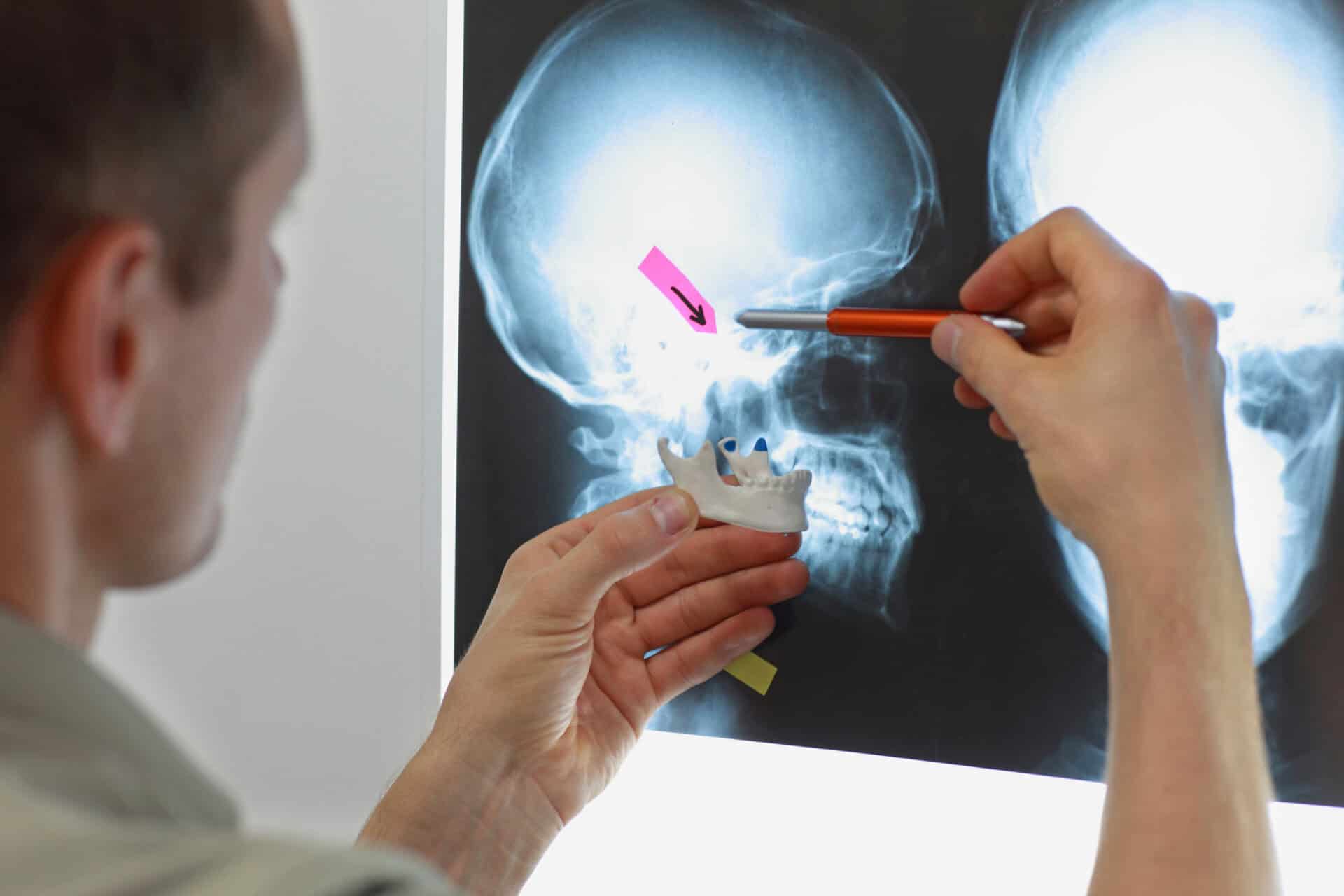Surgical Orthodontics
We can help correct severe dental and facial irregularities through surgical orthodontics. By combining jaw surgery with orthodontic treatment, we enhance both function and appearance, ensuring comprehensive and effective results for our patients.

Surgical orthodontics (orthognathic surgery) corrects jaw irregularities, improving chewing, speaking, breathing, and facial appearance. Braces are used alongside to ensure teeth are properly positioned after surgery.
What is Surgical Orthodontics?
Surgical orthodontics, also known as orthognathic surgery, corrects jaw irregularities to improve chewing, speaking, breathing, and facial appearance. It repositions the jaw and, consequently, the teeth. Braces are used in conjunction with jaw correction to ensure teeth are properly aligned after surgery.
Who Needs Surgical Orthodontics?
Surgical orthodontics is considered for non-growing adults with improper bites or facial esthetic concerns. Jaw growth typically completes by age 16 for girls and 21 for boys. Surgery is performed after growth is complete, but pre-surgical tooth movements can begin 1-2 years prior.
How Does it Work?
Orthodontic treatment usually lasts 18-24 months, during which you wear braces and have scheduled adjustments. Although your bite may seem worse initially, jaw surgery will align your jaws and teeth correctly.
Surgery can take several hours and may be performed in a hospital, day surgery center, or office. Lower jaw surgery involves moving the tooth-bearing portion of the jaw forward or backward. Upper jaw surgery may reposition the jaw forward, backward, raised, or lowered, sometimes with bone added or removed. Other facial bones may also be repositioned or augmented.
After surgery, you can typically return to school or work within two weeks. Healing takes about 4-8 weeks, after which your orthodontist fine-tunes your bite. Braces are usually removed within 6-12 months post-surgery, followed by wearing a retainer to maintain your new smile.
Surgical Orthodontics Services
Jaw Correction
Jaw correction, also known as orthognathic surgery, addresses jawbone irregularities to improve function and appearance. This surgical procedure is often necessary when orthodontic treatments alone are insufficient.
Jaw correction surgery can fix bite problems, enhance facial symmetry, improve speech, alleviate breathing issues, and relieve jaw pain associated with TMJ disorders. The surgery involves repositioning the jawbones, securing them with plates and screws, and sometimes using bone grafts. Performed under general anesthesia, the procedure requires a recovery period with specific dietary guidelines and activity restrictions.
Typically, orthodontic treatment such as braces or aligners is used before and after the surgery to ensure the teeth align correctly with the new jaw position. This comprehensive approach improves oral function, enhances facial aesthetics, and boosts overall quality of life.
Palatal Expansion
Palatal expansion is a dental procedure designed to widen the upper jaw, or palate, to improve overall oral function and aesthetics. When traditional expanders are insufficient, more advanced techniques may be employed to achieve the necessary expansion. This process helps in correcting bite issues, such as crossbites, and enhances breathing by increasing the space in the nasal passages. The expanded upper jaw provides better alignment of the teeth and creates more room, reducing crowding and facilitating proper jaw growth and development. By improving both bite and breathing, palatal expansion contributes to overall oral health and well-being.
Overbites
We offer expert correction for overbites through surgical orthodontics. An overbite occurs when the upper front teeth significantly overlap the lower front teeth, potentially causing issues with chewing, speaking, and jaw function. Left untreated, overbites can lead to tooth wear, gum damage, and even jaw pain. Our comprehensive treatment combines jaw surgery and orthodontic care to realign the teeth and jaws, ensuring optimal function, improved oral health, and a balanced, attractive smile.
